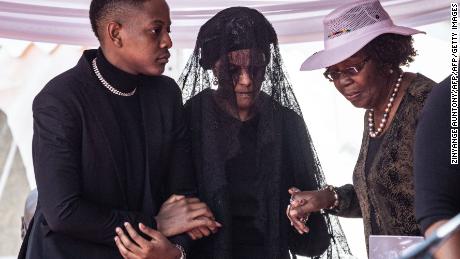Former Zimbabwe president, Robert Mugabe, was buried in a steel-lined coffin under a layer of concrete on Saturday, September 28th following a bitter dispute over his resting place between government officials, traditional leaders and family members.
Twenty-two days after his death, the body of the former leader was finally buried next to his home in Kutama, Zvimba, the village of his birth, 55 miles north-west of Harare. His eldest nephew, Leo Mugabe, who played a central role in the prolonged burial drama, said the coffin which brought his embalmed body to Harare from Singapore had to be changed for security reasons.
“People really are after his body or his body parts, so we wanted something that is tamper-proof. That is why the casket was changed,” he told a local radio station.

After the coffin was lowered into the ground in a private ceremony close to the home which Grace Mugabe had built after their marriage, concrete was laid down around it. Mugabe’s family claimed that this was the burial place he had ultimately wanted and had spoken of in the last six months of his life in Singapore, angry that he had been ousted from power two years ago by his long-time ally, President Emmerson Mnangagwa.
Mrs Mugabe, 54, draped in heavy black lace for more than three weeks, had made it clear to all who would listen that President Mnangagwa and his loyalists were not welcome at the burial. Had he been buried at Heroes Acre, the burial ground commissioned by her late husband and the resting place preferred by the government, she would not have been able to prevent their attendance.

This would have resulted in Mugabe being buried next to his first wife, Sally Mugabe, still regarded by many as the “mother” of the Zimbabwean nation.















